Travels by Bus
See the world on bus, ON foot & on my own.
 |
|---|
Berlin was the first German city I entered, a few years after the wall came down. I had time only to see the city for a day then so I chose Checkpoint Charlie. At that time, only a guardpost stood there. I don't think I took any photo. Maybe it was a cold morning, maybe tourism hasn't taken off then. It was just an eerie place.
The photo above was taken years later in 2007 when I visited Berlin a third time with Bill, where in my opinion, has become a Disneyland.
 |  |
|---|
Checkpoint Charlie was a reminder of the Cold War separating East and West, Capitalism and Communism, Freedom and "Fenced in". The Berlin Wall is only part of the 1,300 km long wall that separated East and West Germany. It took only two weeks for the East German army, police force and volunteer construction workers to build the wall made of makeshift barbed wire and concrete block wall.
In fact, after WWII, Germany was divided into zones and for almost 3 decades, Berlin itself was split into 3: Soviet Union to the East, United States and Great Britain in the West and (eventually) France.
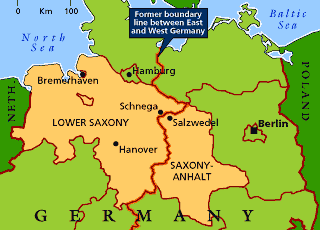

For almost 3 decades (1961-1989), many lives were lost as people tried to smuggle out of East Germany to escape the Soviet ruling. Many tried to escape by dugging underground tunnels, flying a hot air balloon over the wall, hiding under the seat of the Trabis (cars) etc. Our German teacher at the Goethe Institute told us of her experience crossing the border. Each vehicle is weighed upon entry and again when you return. You can read the stories at the museum at the Haus am Checkpoint Charlie.
The second place I went to on my first visit was the Brandenburger Tor.
The Brandenburg Gate is symbolic of Berlin. It was here that Ronald Regan said “Mr. Gorbachov – tear down this wall!” in 1987 and Germany was unified in November 1989. The Brandenburg Gate became Berlin’s symbol of unity.

 |  |  |
|---|
My favourite building in Berlin is the Reichstag. The first time I went, the queue was very long. When I got to the front, they shut the door at me because it was closing time so I had to go back early the next morning but as a reward. I had the whole place almost to myself. When Bill and I visited Berlin together, we did the same - visit first thing in the morning - and it worked.
I wasn't much impressed by the exterior of the Reichstag which was designed by Paul Wallot but the interior designed by British architect Lord Norman Foster was, especially the roof where I could easily spend the whole of a nice sunny day here. The original roof was demolished after the war. It was replaced by a new transparent cupola to represent the transparency of the (new) democratic government (as opposed to Hitler's regime). With the total height of 54 metres, the cupola is where you can have a great view of Tiergarten.
 |  |  |  |
|---|
The mirror cylinder at the centre is very interesting and we found ourselves taking a lot of photos here. It reflects sunlight so that the building uses less electricity. It also allows air exchange through the open upper end of the cupola, and is used for heating which is enabled using bio-diesel produced from rape-seed oil.
A "circular spiral ramp" takes you up to the top but the "down" route is not the same one so you would not bump into people coming from the other direction. It was very cleverly done, I had not even noticed it.
The Reichstag receives a lot of visitors each day. There is no entry fee, and if you want to attend the plenary sittings, you need to apply for a permit.
The front rows of little squares here marked the presence of the Berlin Wall in the past.


Berlin has become very affluent over the years. Many buildings designed by world famous architects dot the city skyline e.g. at Potsdam Platz.
 |  |
|---|
We came by again for a sunset shot.
It was 1st May (Labour Day) when we visited Berlin. On the Avenue of 17th June, there were street "board games" and a few food stalls like this professional grill stand.


When I visited on my own the last time, I walked down Unten den Linden which has a few shops and some embassies like the Russian embassy and the British embassy. The street housing the British embassy was "sealed" with either side of the street guarded by 2-3 policemen since Sep 11.
I also walked all the way to Friedrichstrasse filled with luxury brand shops. I think the Galeries Lafayette there was the only one in Germany, probably because the street is called Französische Str (French St)?


Berlin has become affluent over the years. You can see from these new buildings on/around Potsdamer Platz.


On my second visit to Berlin (2004), Potsdamer Platz was the first place I went to. I was amazed to find myself surrounded by very nice uniquely designed skyscrapers. Kind of reminded me of home. It was 10 years ago when I first visited Berlin. I can't remember much of it but it looked like it has changed a lot. The street seemed 3 times bigger as well.
Potsdamer Platz station used mirrors which reflect the sun to light the station.
I walked past the Berlin Filmhaus to visit the Sony Centre which is very pretty and modern. In the middle of the atrium is a fountain, surrounded by big wide screens. The atrium is also planted with lots of green, in rhythm with the, unfortunately, recordings of bird chirpings and cricket calls. There are two IMAX theaters where you can watch 3-D films here.


Bill and I went to visit the Deutschen Dom which housed exhibits on German political history and a beautiful view of the city, and the Gendarmenmarkt next door.
 |
|---|
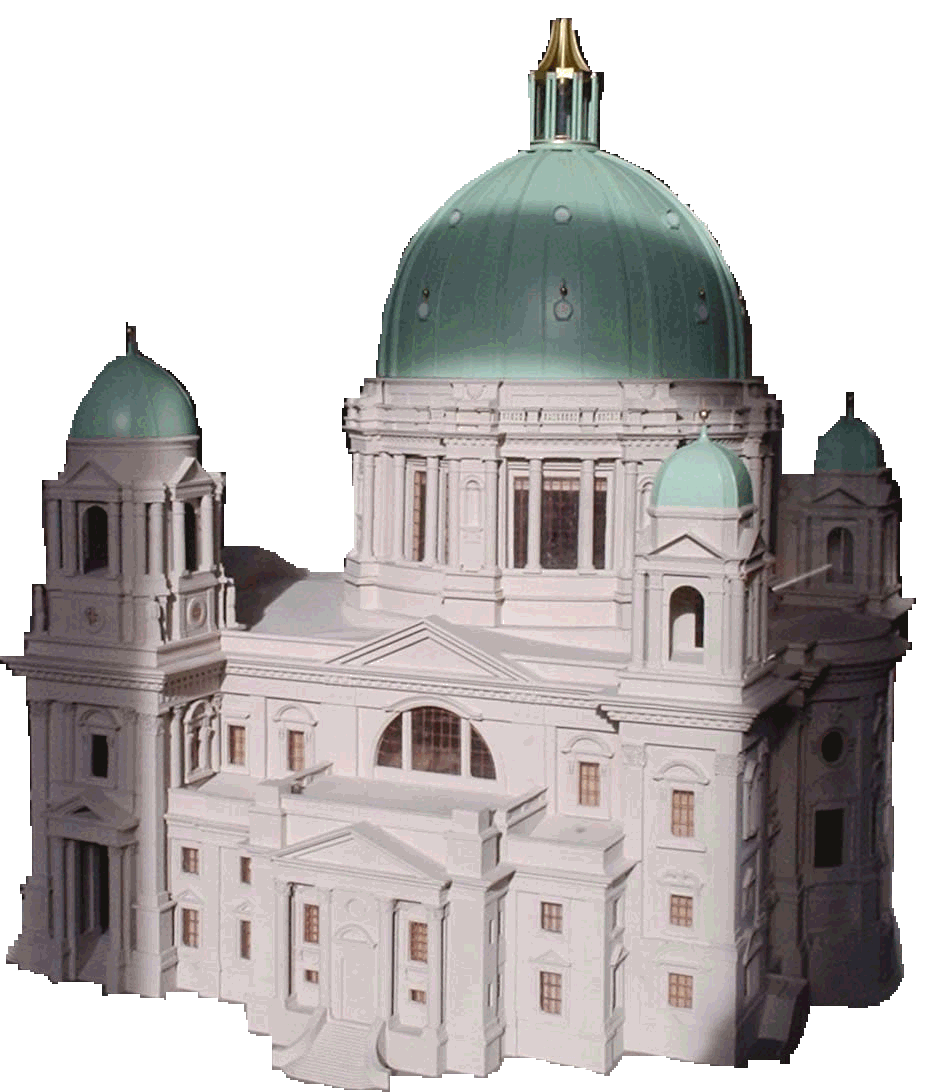


Completed in 1905, the Berliner Dom, located on the historic 'Museum Island' in the river Spree, was the replacement of a 1465 church demolished in 1894, an order by Emperor Willem II's.
The 114m long and 73m wide Berliner Dom was designed by Berlin architect Karl Friedrich Schinkel as a Protestant counterweight to the St. Peter's Basilica in Rome.
During the Second World War, the building was hit by a fire bomb which severely damaged much of the Cathedral. A temporary roof was installed to protect what remained of the interior and in 1975 reconstruction of the church started.
The restoration of the interior begun in 1984 and in 1993 the church reopened. During reconstruction, the original design was modified into a more simplified form.
The interior is indeed richly decorated especially the Sauer's Organ, the 1530 Elector's tomb, the neo-baroque pulpit and the stained glasses designed by Anton von Werner.
A climb up to the top of the Cupola affords a great view of the city below.
 |  |  |  |
|---|---|---|---|
 |  |

We took the underground to Wittenbergplatz for KaDeWe which stands for Kaufhaus des Westens (Department Store of the West) - built in 1907. At 8 storey tall, it was the largest department store in Europe.
A group of elderly American ladies in front of me kept saying, "It's like Macy's". Yes, to me, it's just a huge departmental store like Kaufhof. The most memorable part, however, was the group of musicians playing classical music on the 6th floor. Even an old lady in a wheelchair was dancing!
I got a bottle of Hot Jalapeño as I have not come across it in any other place in Germany. An American couple was going wild with the tacos, the Oreo cookies - all things American.

From here, we walked to the Kaiser Wilhelm Gedachtniskirche (Memorial Church), nicknamed "The Hollow Tooth". Bombed by the British in late 1943, the damaged spire of the old church is now a reminder of the devastation of WWII. The reconstructed church next door, however, is constructed with blue stained glass produced in Chartres, France as part of the reconciliation. I only found out later that the glass depicted the works of Chagall. No wonder I liked it so much. The atmosphere of the church conveyed peace and quietness, encouraging your spirit to rest upon God. No matter, there was a choir practice at the time of my visit and the acoustic is just fabulous, I would go to church every Sunday if I lived here.
 |
|---|



The Kongresshalle am Alexanderplatz (Congress Hall at Alexander Square) host many international conferences and exhibitions. It is a major underground exchange station and next to the famous landmark of Berlin TV station.
This was the place to catch the free shuttle bus for the Popkomm Festival. I was in Berlin at the time of the Popkomm Festival - a "save the clubs" action in conjunction with Berlin bus and Berlin Tourism. You pay €11 to get free entrance into 33 clubs in Berlin. Because Berlin is so big and the clubs are spread out, there were free shuttle buses to take us to all the participating clubs. We were given a small map with the route to take and small write up of each club. Often, we had to follow the group of people in front because we have no idea where the exact location of the clubs were.
We managed about 5 or 6 clubs that night.
It is a good idea for newcomers (to Berlin) to get initiated to the club scene. My favourite was in Maschienenhaus featuring Zion Train, a UK Dub Music Pioneers involved in Alternative and DIY Culture and purveyors of fine Roots Reggae. The voice of Molara is tremendous for such a petite size! The oddest was Sage which had guys wearing angelic wings, and 2 costumed performers wearing gas masks dancing in glass boxes, showering in "blood". Definitely not our choice club.

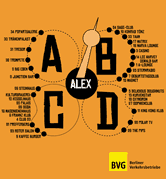

When Bill and I went, we got a room at a pension near Hohenzollernplatz. I don't remember the name of the pension but it had a very high ceiling which is probably another floor high. The room was spacious, you could probably make 2 rooms out of it BUT because I booked an ensuite room, they improvised it and installed a shower cubicle INSIDE the room. Amusing.
Nearby was a Chinese hotpot restaurant run by real Chinese people. We were hungry when we arrived so I was happy that finally there are Chinese restaurants here not run by Vietnamese because Vietnamese cooking is different. We ended up eating at Asian restaurants on our visit here and the occasional Currywurst which Berlin is the capital city for this. And fancy bier Berliner Kind (Child).




When I went to see Holger (on my 2nd trip), I took a shared ride found on the Mitfahrtgelegenheit. My driver was Hao, from Beijing studying in Berlin. He rented an Opel 8-seater to go on a holiday in Italy with his visitors from China. After they flew home to China from Italy, he decided to take 6 passengers incl. me to drive from Munich to Berlin. I sat in the front and conversed with him in Mandarin throughout the 7-hour ride. He said that my Mandarin was good. It was interesting to hear the names of German (cities) in Mandarin. The ride was €25 where a train would be €45. As we came into Berlin, he said that it is the city of bears.



Berlin is divided into a few zones and Holger had an apartment in Schöneberg, about 20-30 minutes on the underground train from the city centre.
The public transport system is rather efficient, clean and reasonably cheap. When I arrived, someone sold me a used 7-day ticket which still had 2 days left for €4 (U.P. €14,50) There is a ticket machine in every station with information in different languages and a "gentle" audio reminder in ENGLISH "Did you remember to validate your ticket?" was played frequently.
Potsdam

Even though it was Sunday, I woke Holger up at 11am to take the train to Potsdam, the capital city of the State of Brandenburg (ignore the arrow on the map)
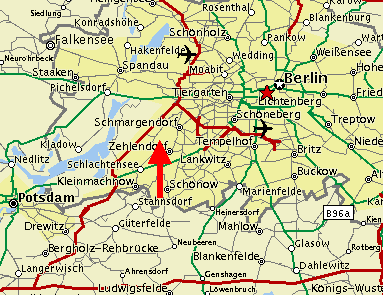
About an hour train ride from Berlin city, Potsdam is touted as one of the most beautiful cities in Germany. The city is more than one thousand years old, being the address of German bigwigs from the 17th century onwards thus, a number of palaces were left behind here. Also, for more than three centuries, the rulers of Brandenburg commissioned the best artists to enhance the Royal residences thus, we see the Holland and Russian quarters here.
Holländisches Viertel -
The Dutch Quarter
This area sees 4 city blocks with about 150 houses built of red bricks in the Dutch style – unplastered, with white seams, shuttered windows. It was built in the period from 1734 to 1742 for Dutch craftsmen who had been invited by King Frederick Wilhelm I, the Soldier King, under the supervision of Johann Boumann.
There were many exclusive shops, cosy coffee houses and restaurants which made a real nice Sunday morning stroll.
The Russian Colony - Alexandrowka
This Russian Colony consists 13 wooden houses in Russian style, built between 1826 and 1827 on the special wish of the former Prussian king, Friedrich Wilhelm III in memory of his deceased friend Czar Alexander I.

Built according to the village Glosovo near St. Petersburg in Russia, this artists' village consists of 12 yards, one warden’s house, a royal mansion and a Russian Orthodox chapel (1829) on the neighbouring Kapellenberg hill in the north. Former members of a Russian soldier's choir were the first inhabitants of this village. Now, only a few descendants of the former inhabitants live here. In 1999 the colony was made part of the UNESCO world heritage.




Schloß Sansoucci


Some more walking and a bus ride, we finally reached Schloß Sansoucci i.e. "Castle of no worries". It reminded me of Chateau de Versaille.
Schloß Sanssouci palace, the former summer residency of Frederick the Great, was built above the terraced vineyard from 1745 to 1747 by Georg Wenzeslaus von Knobelsdorff following the King’s ideas and sketches.
A fancy rococo architecture in Germany.
In the picture gallery paintings by Watteau, Panini and Pesne were on exhibit.
Located along the Havel river, its surrounding lakes and gardens give one a relaxed feeling, it's marked as a choice retirement place for me.






Babelsberg Filmpark
We spent too much time at the schloß and we were just enjoying the Sunday that we were too late - at 5 p.m. - to get into the Babelsberg Filmpark where movies like "Around the World in 80 Days" and "The Pianist" were filmed. The tour of the Volcano, U-boat, the cloak-and-dagger show, the reptile exhibition in the World of Horror, plus the Showscan action cinema, would have taken 4 hours. I am most sad that I missed outJanosch‘s Dreamland with boat tours :-(

Described as a beautiful baroque palace, Schloss Charlottenburg, is the oldest surviving Prussian palace in Germany. Its construction began in 1695 by King Friedrich Wilhelm I as a summer residence for his wife, Queen Sophie Charlotte.
There is an Egyptian Museum with the famous Bust of Nefertiti among its exhibits. There is a former royal teahouse Belvedere containing an exquisite collection of porcelain; the Schinkel Pavilion which houses drawings, paintings, sculptures, furniture and porcelain by Karl Friedrich Schinkel; and the neoclassical Mausoleum containing the tombs of Queen Louise, King Friedrich Wilhelm III, Emperor Wilhelm I and Empress Augusta. Alas, I was simply too tired to walk the ground.
If not for Holger doing his Diplom (Bachelor) thesis in Berlin, I might not have visited Berlin a second time. Thanks to him, I had a swell time in Berlin. When it was finally goodbye, I was rather sad to leave.
Schloss Charlottenburg (Charlottenburg Palace)

The Klaubers live in Esslingen - about 30 minutes' drive from Stuttgart. They are such hospitable people that I felt at home right away despite our language differences. They spoke no English & I spoke kein Deutsch then but we were able to communicate through hand & body. The English-German dictionary was handy and before this, Brigitte had taught me some common words for I, you, thank you, bye...
Esslingen
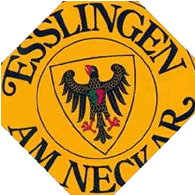
Germans are very hardworking and serious although the young ones are very fun-loving e.g. Harry thought that "Scheisse" is the only word I need to learn.



The baden wüttembergers are pragmatic and known to be careful with their money; the dialect can be stronger here while e.g. people from Hessen speak "Hasschich" and pronounce the "ch" & "sh" more prominently. That's also how you tell which region people come from.
I prefer Esslingen to Stuttgart. Stuttgart is good for shopping and clubbing but that night when we wanted to club with Michael, Frank's Beetle went up in flames. He cried. Actually, we were lucky that we were just at the beginning of the highway when I noticed it reaked of gasoline. We got out in time before the engine burst into flames. Frank's father called me an "AutoKiller". I didn't need to learn German to understand what it meant. Whatever. It was the only time I rode in a German police car.
Heidelberg

It's a university town and had little cafes & shops along the cobbled street Hauptstrasse - at that time, the longest shopping street in Germany. In the center is the Hercules' Fountain where accused witches & heretics were burned during the Middle Ages.
We went to the Heidelberger Schloss (castle) which was built over 400 years in the beginning of the 13th century. There's the Fass - World's largest wine barrel & a Apotheken (chemist) museum.


There are many events in Heidelberg and the Faschings Parade (which runs the day before Ash Wednesday) is one of the popular ones. It's similar to Brazil Carnival where people cross-dress, in different costumes & parade the street. My friend Christopher said one year, his male friends & him dressed up as hookers, complete with chain & cage and became the centre of attention.
From the Klaubers, I learnt that Germans are very conscious of the environment and they put in effort to recycle: paper are separated from glass (which is separated into coloured brown, green or transparent) and metal. And bio-degradable waste like egg shells are put in the compost bin in the garden for a self-degrading process which will be used as fertilisers. Well, they made it cheaper to recycle than throw because you have to pay for your waste here.
They even "recycle" animals. When Thomas' dog Pasha died, he "donated" it to a factory. He said that Pasha would be made into buttons or soap etc.
They have also set aside a night dubbed the Scavangers' night. Every town has their scavangers' night where people can put their things in front of their house and free for anyone to pick up which was perfect for our garden house: We took home a door, a table & a mirror.
Well, Germany has many regulations for everything e.g. walls must be of a certain thickness (for heat and sound insulation); some houses are installed with glass roofs to let in natural light yet retaining the warmth from the sun.
I learnt a lot from the Germans, and from Frank, the world of travels! He has completed his travels in Europe by the time I met him at 25 years old since he started at 16 but that is partly because the Germans are blessed with long annual leave from work - 6 weeks is normal.
Koblenz am Rhine
After 2 weeks with the Klaubers, it was hard but I left for Koblenz in search of castles along the famous river Rhine which is known as a "sailor's nightmare, a poet's dream & often the center of rhetorical storms of nationalism".
The hostel I stayed was right on top of that hill - Jugendherberge Koblenz. It was converted from a fortress. Being high up, the air was always crisp & nice but it also meant walking up the steep slope or taking the sesselbahn - "ski"chair.




From Koblenz, it's not very far to the Mosel Valley (Moseltal). It's of hills, vineyards, little towns and ancient castles. I chose Cochem to visit the Reichsburg castle perched hill on a hill above the town. The castle is built in the 11th century but was destroyed in 1689 by the French led by Louis XIV & rebuilt in 1868. There's a guided tour around the castle.

Rödermark
A few years later, I returned to Germany. To Rödermark this time which is between Frankfurt & Darmstadt.

Rödermark is a little town not more than 10,000 inhabitants. I suppose if not for Paramount Park (which has dance floors for retro, and trance music separately under one roof), it would be an unknown place. I was told that back then Hollywood stars come to Paramount Park here when they visit Frankfurt.
I love Darmstadt. We go there for shopping, dining and even clubbing; Frankfurt doesn't have that same appeal although Sachsenhause in Frankfurt is great. It was here that I made friends with more Germans, understanding more of their culture. For example, I learnt the hard way that the older generation women e.g. Thomas' mother whose kitchen is more sacred than her bedroom. She's a cold one. I'm still puzzled why she left the big (living) room empty i.e. no one uses it and let her children cramp in very tiny rooms. She is around my granny's age and she made me missed my granny who is nothing like her.
Thomas is an avid biker and he introduced me to biking in the forest. The mountain bike he gave me was a very good bike but there was no lights on it. It was challenging yet thrilling to bike through the dark forest at night. Ha! Having a bike meant freedom but it also meant that I had to bike to work in the morning when it is especially cold. I've always hoped that it'll rain so that he'd drive me instead. And he never complain when I got him out of bed for that.
Our friend Uwe cycles EVERYwhere. He has a little trailer attached to his bike - his shopping trailer. With Uwe, I had the chance to pick berries in the summer and he took me to Sabine's Polterabend (Sabine was Thomas first crush when they were 2!). Polterabend is a German pre-wedding party where guests are to bring old porcelain (dishes) & smash them for good luck. Legend has it that this act will drive devils away (Polter as in Poltergeist). It's actually a chance for friends to get together & party. The 2nd polterabend I went with Uwe had engaged a DJ. The children & adults danced the night away.

Germans are good with parties. One of the things I miss about life in Germany is the house parties. I realised that people were interested about Singapore & how much they know about my country. Germans are also very nice towards me and English is common. At the end of my stay, my listening/comprehension of German is better but I can still not speak well.



Thomas' nephew the one-year-old Marco was like my own child. We spent quite a lot of time together, at a time when he was starting to walk and learning to talk. One of his first words was "Yoyo" and "lililil" which he used to call me. After I left, it was heartbreaking to hear Thomas tell me that Marco went to the entrance of our apartment and call out to me.
Thomas has 2 other nephews: Florian & Maximilian - 7 & 4 respectively. Both learnt a little English from me through eavesdropping on our conversation. Really interesting. I wonder how all the kids look like now as adults.
I'll also never forget my co-worker, Klaus. He's 68 years old and fought in the WWII but he is a sweet guy, like a grandfather to me. He joked that we Chinese have slanted eyes because we eat too much rice; whereas they have round eyes because they eat too much potato.
Thomas' father was also very dear to me. He would spend time just sitting and speaking a mix of French and German wih me. God bless them all.


